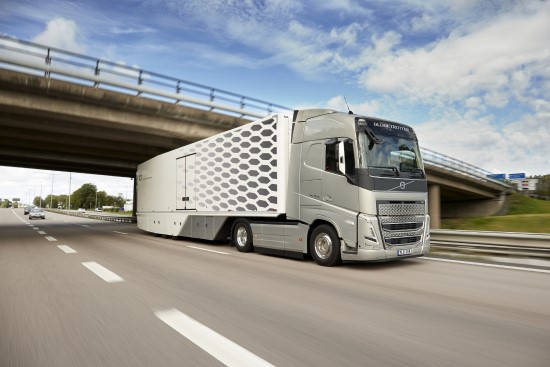Through several independent tests by German truck magazines, the Volvo FH with the I-Save system has become the most fuel-efficient model in terms of diesel and AdBlue use. The Swedish truck achieved these results, although the latest technology to reduce fuel consumption has not yet been introduced in the test model.
Today, transport companies are paying more attention than ever to fuel consumption, so every gram saved is important. Not only diesel but also AdBlue prices have broken the ceiling recently. The price of this solution, which has more than doubled, has caused considerable headaches for transport carriers.
“When investing in a new truck, it’s more important than ever to look closely at its overall energy consumption,” says Peter Franzen, Volvo Trucks’ engine product manager.
Combined low cost and high speed
Independent German magazines Trucker and Transport have recently compared the Volvo FH 500, which has an I-Save system, to trucks from other major European competitors. Volvo won the fuel economy nomination in both tests for the combined cost of diesel and AdBlue.
Despite the low cost, the Volvo truck maintained a high average speed in a Trucker benchmark test and even outperformed its competitors in Transport magazine tests.
“Our engineers have managed to combine high speed with very low fuel consumption, which is a fantastic achievement. You often have to choose one or the other, but we have shown that it is possible to combine economy and efficiency, explains Franzen. “Even more impressive is the fact that in both tests we were able to achieve the best fuel economy results, even though the truck we tested had no recent upgrades that would have reduced fuel consumption by a few more percent.”
Improvements save up to 13% on overall fuel costs
The Volvo FH used in the tests is characterized by the I-Save specification, a solution system that combines the different functions of powertrains and software to maximize fuel economy. At the heart of the I-Save is a turbocharged engine that allows you to drive longer at low revs and higher gears.
Thanks to the latest improvements, I-Save can further increase overall fuel economy by up to 13% compared to 2019, when the system was officially introduced.
“To improve fuel efficiency, we have taken another step towards optimizing the engine of Volvo FH trucks with I-Save. Given the record high current energy prices, the time for such a step for us could not have been better, ”concludes P. Franzen.
New enhancements: from engine to software
With the latest upgrades, the combustion process for truck engines has been further improved: the nozzles, compression ratio and camshaft have been carefully adapted to the bottom of the unique new wave-shaped pistons. At the same time, the total weight and internal friction decreased.
The manufacturer has also upgraded its high-performance turbocharger, oil pump and even oil, fuel and air filters to achieve better performance.
The upgraded engine works in conjunction with the intelligent and automated I-Shift transmission – now up to 30%. faster than before. Its faster response saves even more fuel and makes driving a truck more comfortable and smoother.
The truck’s new I-Torque intelligent torque software increases energy efficiency by analyzing future road topography data via the I-See function and adapting driving to the actual route. I-See uses planned route information to make the best use of the truck’s kinetic energy when rolling in hilly terrain.
The new I-Torque software optimizes both gear shifting and engine torque. The computer monitors road data and evaluates terrain and vehicle weight to determine exactly what torque and when the engine needs to use the most fuel efficiently.
During long distances, truck aerodynamics play an important role in fuel economy, and several major changes have been made to improve airflow management, including narrower gaps in the front of the cab and door extension elements.
All of these improvements result in the highest fuel economy and lowest overall costs for Volvo Trucks. So the engineers themselves are looking forward to seeing how their work will be able to further improve the results through future tests of specialized media.
–


